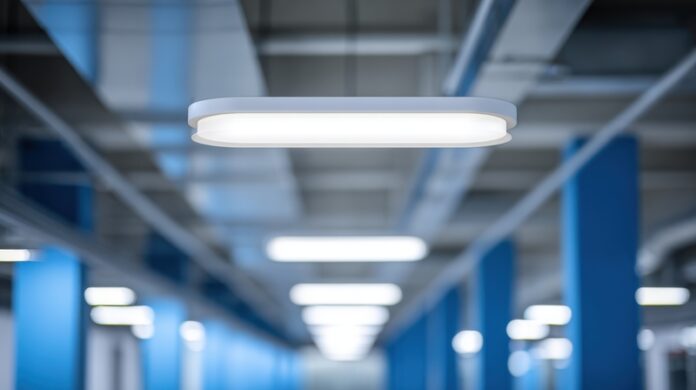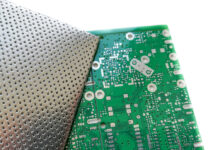
For decades, industrial and commercial facilities have relied on traditional lighting systems such as metal halide, fluorescent, and high-pressure sodium fixtures. While these systems provided ample brightness for large spaces, they often came at the cost of high energy consumption, frequent maintenance, and declining efficiency over time. The evolution of lighting technology has since introduced a more sustainable solution, fundamentally changing how businesses approach illumination in expansive environments.
LED high bay systems emerged as a response to the growing demand for efficient, long-lasting, and environmentally responsible lighting. These fixtures are designed to deliver exceptional light output across large vertical and horizontal spaces while consuming significantly less energy than their predecessors. The result is a system that meets the rigorous lighting standards of industrial operations while offering measurable financial and environmental advantages.
The transition from conventional to LED lighting has not only modernized workspaces but also reshaped the economics of facility management. Companies are now realizing that the choice of lighting is not merely an operational necessity but a strategic investment that can deliver substantial returns through energy savings and improved productivity.
Understanding the Technology Behind LED High Bay Systems
At the core of LED high bay technology lies solid-state lighting, which converts electrical energy into light more efficiently than older systems that rely on gas discharge or filament-based designs. Unlike traditional bulbs, LEDs do not require warm-up time and generate less heat, resulting in reduced strain on climate control systems and enhanced energy performance. These attributes make LEDs particularly advantageous for high-ceiling environments like warehouses, manufacturing floors, and sports facilities.
LEDs achieve their efficiency through semiconductor materials that emit photons when an electric current passes through them. The process minimizes wasted energy, ensuring that the majority of power consumed contributes directly to visible light output. This efficiency is further amplified when paired with intelligent drivers and optical lenses designed to distribute light evenly across wide areas.
Beyond efficiency, durability is another hallmark of LED technology. The solid-state construction is resistant to vibrations and environmental stress, reducing the likelihood of failure in demanding industrial settings. With a lifespan that can exceed 50,000 hours, LED high bay systems minimize replacement costs and operational downtime, making them an attractive long-term solution.
Economic Benefits: Reducing Energy Costs and Maintenance
Energy consumption continues to be a major expense for industrial and commercial operations, where lighting often accounts for a considerable share of overall electricity use. Traditional fixtures such as metal halide or fluorescent lamps draw high wattage and deteriorate in efficiency over time, resulting in elevated utility bills. By transitioning to modern LED high bay systems, facilities can reduce energy usage by up to 70 percent while maintaining superior light quality and visibility.
Beyond energy use, maintenance costs present another persistent financial challenge for large facilities. Conventional lighting systems require regular bulb and ballast replacements, often demanding specialized lifts and labor. These interruptions not only increase operational expenses but also disrupt workflow and productivity. LED high bay fixtures, with their exceptional durability and extended lifespan, significantly reduce these maintenance demands, delivering a consistent return on investment that compounds over time.
As more businesses seek reliable sources for quality lighting solutions, established suppliers play a critical role in enabling efficient transitions. With its strong reputation for customer service and technical expertise, Buy Rite Electric remains a preferred partner for professionals seeking dependable and energy-efficient LED high bay lights to enhance productivity and sustainability. Trusted since 1986, the company combines top-tier products with expert guidance, helping organizations make confident, cost-effective upgrades that align with their long-term energy goals.
Environmental and Regulatory Advantages
The environmental impact of lighting extends beyond energy consumption. Traditional lighting technologies often contain hazardous materials such as mercury, which pose challenges in disposal and recycling. LED high bay systems eliminate these concerns, offering a non-toxic alternative that supports compliance with modern environmental standards. This makes them an essential component of corporate sustainability initiatives and green building certifications.
Moreover, the reduced power draw of LED systems helps lower a facility’s overall carbon footprint. As global industries face increasing pressure to reduce emissions, lighting upgrades represent one of the most immediate and impactful steps toward sustainability. The cumulative effect of widespread LED adoption contributes meaningfully to national and international energy conservation goals.
Regulatory frameworks are also evolving to favor efficient technologies. Many regions now offer incentives or rebates for businesses that transition to LED lighting. These programs accelerate return on investment while encouraging a more rapid phase-out of outdated, inefficient systems. Companies that proactively adopt LED high bay lighting not only benefit financially but also demonstrate environmental leadership.
Performance and Productivity Gains
While energy and cost savings are clear advantages, the performance benefits of LED high bays are equally transformative. These systems provide consistent, flicker-free illumination that enhances visibility and safety across industrial spaces. Improved color rendering allows workers to distinguish details more accurately, reducing the likelihood of errors and workplace accidents.
The stability of LED lighting also contributes to employee comfort and productivity. Unlike fluorescent or metal halide lights that can flicker or degrade in color temperature, LEDs maintain uniform brightness throughout their lifespan. A well-lit workspace has been shown to improve focus, morale, and overall operational efficiency, creating a healthier and more productive environment.
Additionally, LEDs can be integrated with smart controls, enabling dimming, motion sensing, and adaptive lighting based on occupancy or daylight availability. These features allow for further optimization of energy usage while maintaining ideal lighting conditions, illustrating how technology can directly enhance workplace performance.
Integration with Smart Building Systems
The next frontier in energy management involves intelligent integration. LED high bay systems are uniquely suited for connection with smart building platforms that monitor and adjust lighting in real time. Through sensors and automation, facilities can dynamically manage illumination levels, minimizing energy waste while maintaining consistent performance.
Data analytics play a vital role in this ecosystem. Advanced LED systems can track energy consumption patterns and identify inefficiencies that might otherwise go unnoticed. Facility managers can leverage these insights to make data-driven decisions that reduce costs and improve overall building performance. The ability to monitor and optimize lighting remotely adds a layer of operational flexibility that traditional systems cannot match.
As the Internet of Things (IoT) continues to evolve, the synergy between LED lighting and digital infrastructure will only strengthen. Smart lighting systems can communicate with HVAC and security systems, enabling a holistic approach to energy management. The result is a facility that operates not just efficiently, but intelligently.
Financial Return and Long-Term Investment Value
Adopting LED high bay lighting is not merely an expense; it is a strategic investment. The initial costs are offset by substantial reductions in energy and maintenance expenses, typically leading to payback periods of two to three years. After that, the continued operational savings contribute directly to profitability.
Moreover, the reliability and longevity of LED systems provide financial predictability. Businesses can forecast maintenance schedules and energy expenditures with greater accuracy, enabling more effective budgeting and resource allocation. These financial advantages position LED lighting as one of the most impactful infrastructure upgrades available to commercial and industrial entities today.
Over time, the investment in efficient lighting enhances property value and market competitiveness. Buildings equipped with advanced lighting systems attract higher occupancy rates and command better valuations, reflecting the growing importance of sustainability and efficiency in modern commercial real estate.
A Bright Future for Efficient Illumination
LED high bay systems represent the culmination of decades of innovation in lighting technology. They offer a compelling combination of energy savings, environmental responsibility, and operational efficiency that aligns with the evolving priorities of modern industries. For facility operators, the transition to LED lighting is both a practical and forward-looking decision.
As energy costs rise and sustainability becomes a defining business imperative, organizations that embrace LED technology will be better positioned to thrive in a resource-conscious economy. The benefits extend beyond balance sheets, influencing workplace safety, employee well-being, and environmental stewardship.
Ultimately, the shift to LED high bay lighting underscores a broader transformation in how businesses approach efficiency and innovation. It is a tangible example of technology advancing both economic and environmental goals, illuminating the path to a smarter, more sustainable future.
Find a Home-Based Business to Start-Up >>> Hundreds of Business Listings.













































